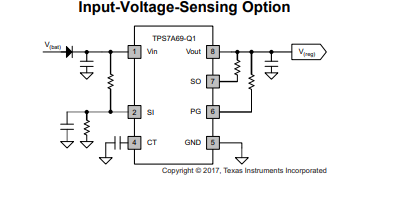Tool/software:
Hello Expert,
My customer is using TPS7A69-Q1. The 2nd level power has a leakage current which can cause VEN (3.38V) and VSO are over Vout=3.3V. Are there some risks?

This thread has been locked.
If you have a related question, please click the "Ask a related question" button in the top right corner. The newly created question will be automatically linked to this question.
Tool/software:
Hello Expert,
My customer is using TPS7A69-Q1. The 2nd level power has a leakage current which can cause VEN (3.38V) and VSO are over Vout=3.3V. Are there some risks?

Sorry, It's VPG and VSO not VEN.

Hello,
Thank you for your question.
As these are the absolute maximum ratings for each pin, by hitting over the maximum voltage for the PG and SO pin you could be at risk of damaging the device.
The device may not work according to its designed functionality.
Best,
Hannah
Hannah and wending,
We see that the "Recommended Operating Conditions" said the PG and SO can withstand 5.5V, and we have test the V-I curve of PG and SO Nmosfet and find the max voltage is 12V. So we wonder the 3.8V PG & SO is also unsafe?
And the TPS7A69 datasheet covers the FIX-3.3V and FIX-5.0V, maybe that two MPN have the same Nmosfet design of PG and SO.

Hello,
I see how this can be confusing. I did not get a change to look at the recommended operating conditions.
We recommend keeping to the absolute maximum table specs as the SO pin is connected to VOUT through a pullup.
Therefore, please use the abs max table ratings of not exceeding VOUT for the PG and SO pin.
Hope this helps to clarify things.
Best,
Hannah